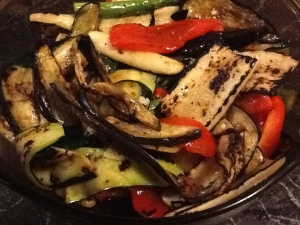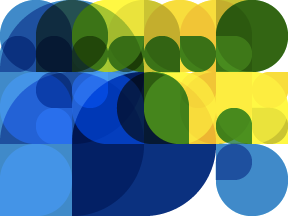We hate cholesterol.
We track it down and kill it at all cost.
We spend a fortune in developing new drugs to keep it down.
We look for “low cholesterol” labels when we buy food products.
We are overjoyed when our annual body check shows low cholesterol level.
We simply do not want to have anything to do with it. A cardiologist once announced at a conference,” we do not need cholesterol to function, so keep it as low as possible!”
Well, maybe we should be reminded that nature never makes mistakes. We ought to be asking ourselves why on earth we have cholesterol present in our body in the first place. While it is true that there is a link (a link has never meant to be equal to a cause) observed between high cholesterol and cardiovascular disease, the physiological function and benefit of cholesterol have been largely ignored.
Let’s look at some basic human physiological facts.
1. All human steroid hormones are made from cholesterol
Steroids are organic compounds that have a typical chemical structure. For those who are interested, this structure contains a special arrangement of four rings joining together. Every time when you see this structure, you are looking at a steroid. In the body, steroid hormones include sex hormones, stress hormones, and mineral regulating hormones. The drug Prednisone is a steroid too.
Most people are familiar with sex hormones. Some of the names we commonly hear are estrogens, testosterone and progesterone. Estrogens are a group of hormones that define female characteristics. Males make them too but in a much lower level. Testosterone defines male characteristics in humans but females also make it. Both male and female make progesterone but again in different levels. There are many more sex hormones that the general public is not aware of but nonetheless are absolutely critical to our wellbeing. For example, we have the DeHydroEpiAndrosterone, commonly known as DHEA, made in the adrenal glands and has the ability to slow cellular aging and maintain one’s stamina. Or we have the pregnenolone, the product made directly from cholesterol and serves as the mother of all steroid hormones.
Stress hormones are derived from cholesterol. Cortisol is one of these. Cortisol is made from the adrenal glands. Apart from helping the body to cope in view of a dangerous situation, it is the hormone that makes us feel refreshed upon waking in the morning. Chronic fatigue patients typically make very little cortisol.
Aldosterone represents the mineral regulating hormones. It is again made from cholesterol in the adrenal glands. It regulates the keeping and releasing of minerals from and to the urine and has an influence on our blood pressure. To little aldosterone may cause hypotension and too much may lead to hypertension.
2. Vitamin D is made from cholesterol.
Vitamin D has attracted a lot of attention recently because of the realization of endemic vitamin D deficiency in our population due to years of sun avoidance policy. Vitamin D, strictly speaking , is not a vitamin but a hormone. Vitamin D deficiency is associated with depression, obesity, diabetes, autoimmune disease and osteoporosis. The body makes vitamin D by allowing uv light from the sun to convert cholesterol molecules in our skin into vitamin D.
3. Cholesterol is an important component of our nervous system including the brain.
Cholesterol helps to form myelin sheath. Nerve cells (neurons) have long fingers like projections (axons or dendrites) on them to connect themselves to the next neuron, a bit like the electrical wires connecting one light bulb to another. Myelin sheath is the insulation coating outside the wires to prevent any possible losses of information during signal transmission. Cholesterol is one of the critical components of the myelin sheath. Poor myelin sheath formation leads to poor signal transmission in the nerves, and one extreme example is Multiple Sclerosis (in this case due to autoimmune activation and self-attack against the myelin sheath rather than cholesterol deficiency).
Cholesterol is also an important nutrient to help learning and memory. Recent research indicated that cholesterol is released by the brain cells to switch on connections between nerve cells. The better the connection is, the better the memory and learning. It is observed that many autistic children have cholesterol deficiency. By supplementing these children with cholesterol tablets, improved language skill is noticed. It is no wonder that some patients developed poor memory from taking lipid lowering agents.
4. Cholesterol is an important component of cell membrane
Molecule by molecule, cholesterol makes up nearly half of the cell membrane. Proper amount of cholesterol in the cell membrane helps to maintain the integrity of the membrane and prevent it to go too soft or too rigid. The correct consistency of the cell membrane is essential for the cell to function properly.
5. Cholesterol is essential in making bile in the liver
Bile acids/bile salts are made in the liver and stored in the gall bladder. When we eat a meal that contains fat (therefore fat soluble vitamins like vitamin A, D, K, E), the gall bladder contracts and squirts out the stored bile which then mixes with the meal and makes the fat water-soluble for effective digestion and absorption.
If one is on low-fat diet for a prolong period of time, the gall bladder becomes lazy and the bile in the gall bladder becomes stagnant. That is when the bile salt precipitates into solid lumps–one of the many reasons people get gall stones. Mind you if those solid lumps are not calcified then will not be picked up by a gall bladder ultrasound.
So in summary, a healthy body makes an adequate amount of cholesterol in the liver, allocates some for hormone production, some for nervous system function, some to form healthy cell membrane, and some in the liver to make bile to aid digestion. So cholesterol is constantly being made and constantly being utilized to achieve a perfect equilibrium, reflected by a normal cholesterol level. High cholesterol level results when any of these flows is interrupted. Using medications to block cholesterol synthesis is at time necessary but aiming at restoring the body’s cholesterol metabolism is a much more rewarding exercise.




You must be logged in to post a comment.